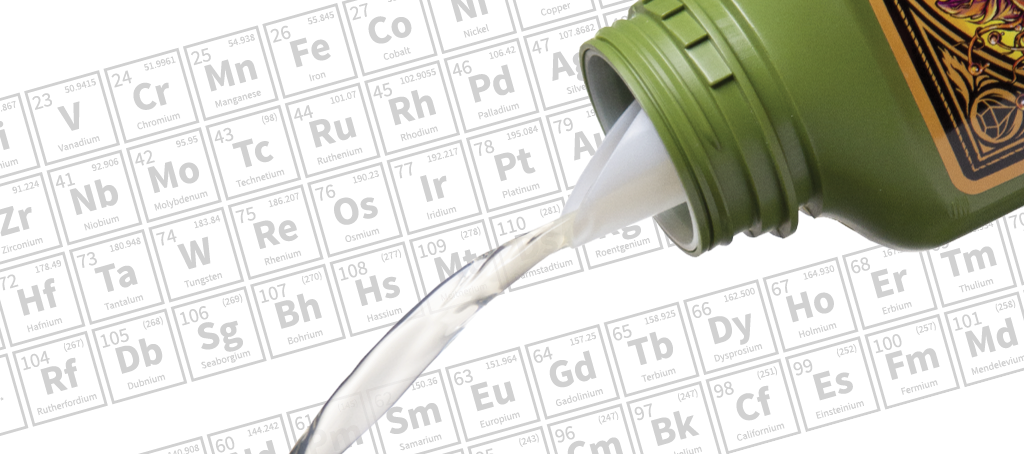
- February 15, 2023
- 4 comments
- 2 Views
Hydroponic nutrients need to be applied in the right concentrations at the right times in the crop life cycle. They also need to be formulated in the right ratios, so that the various essential nutrients complement and balance one another rather than work against each other.
Plants need at least a minimum amount of every nutrient essential to plant life. Even if a plant gets more than enough of every essential nutrient except one, it might not thrive. If even one essential nutrient falls beneath its minimum required amount, the plant will suffer a deficiency, which may undermine yields and crop quality.
If plants suffer a deficiency in just one micronutrient—say, boron—it can cause as much trouble and cost a grower as much money in terms of lower crop quality or lost yields as a deficiency in a heavy-hitting macronutrient like nitrogen.
Let’s home in on B to see what a big difference a little nutrient can make.
Boron deficiency is one of the most common, and yet it’s pretty easy to avoid.
In this study on fava beans, it took only small quantities of boron to meet the minimum and increase growth and yields.
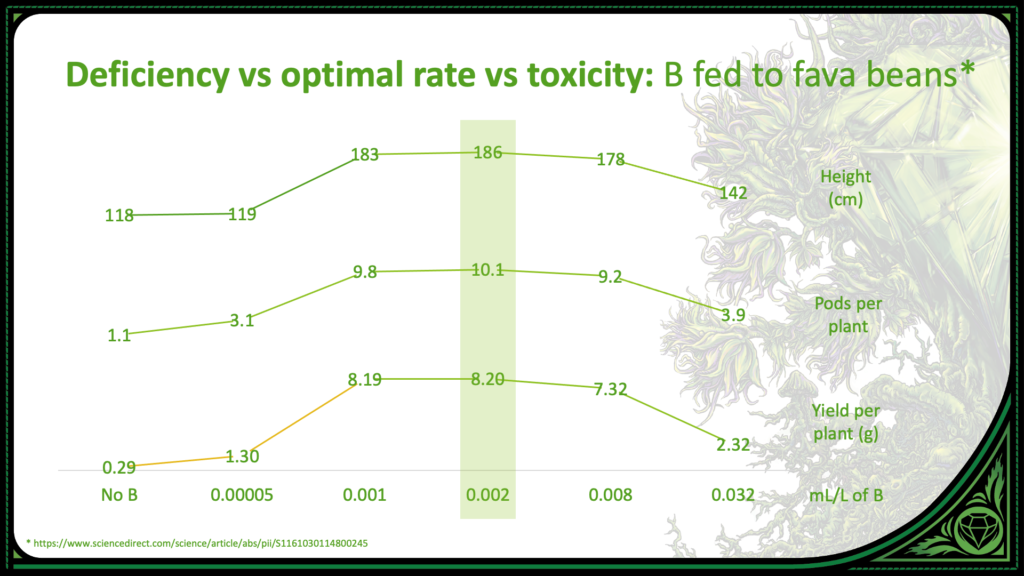
But you can also have too much of a good thing. Oversupply of a nutrient can result in toxicity.
The range between deficiency and toxicity is narrower for boron than for any other nutrient. However, the range is different for beans than for maize. And it is certainly different for cannabis. Therefore, to maximize plant potential, nutrients must be dialed-in and tailored to particular species. Otherwise, there’s a risk of not only of undersupplying boron or another nutrient but also of overfeeding it. Both damage yields.
Every essential nutrient is in our base nutrients. What sets our them apart from other hydroponic nutrients is that we have formulated them to have the right concentrations and precise ratios. This minimizes the risk of deficiencies or overfeeding and ensures plants get a diet that mirrors their nutritional needs throughout their life cycles.
Are you already using a competitor’s bloom booster or other supplement? You can, of course, combine it with one of our base nutrients. However, growers should use our product line as it was designed: as a complete feeding program.
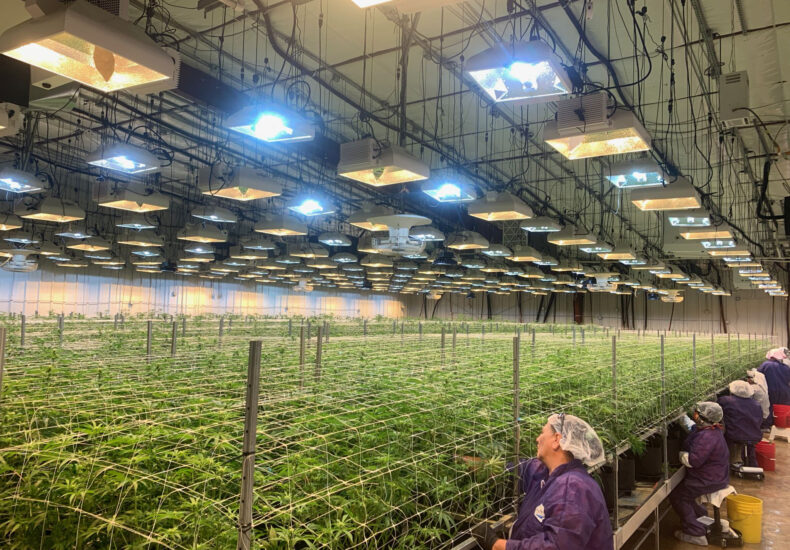 Cannabis
Cannabis Equipment for Indoor Growing
- April 17, 2024
- 0 comments
- 181 Views
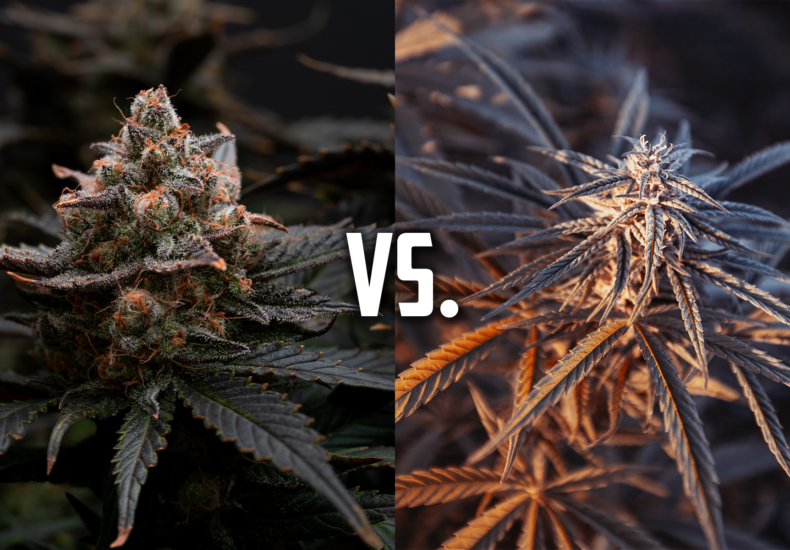 Cannabis
Cannabis Photos vs. Autos
- April 10, 2024
- 0 comments
- 231 Views
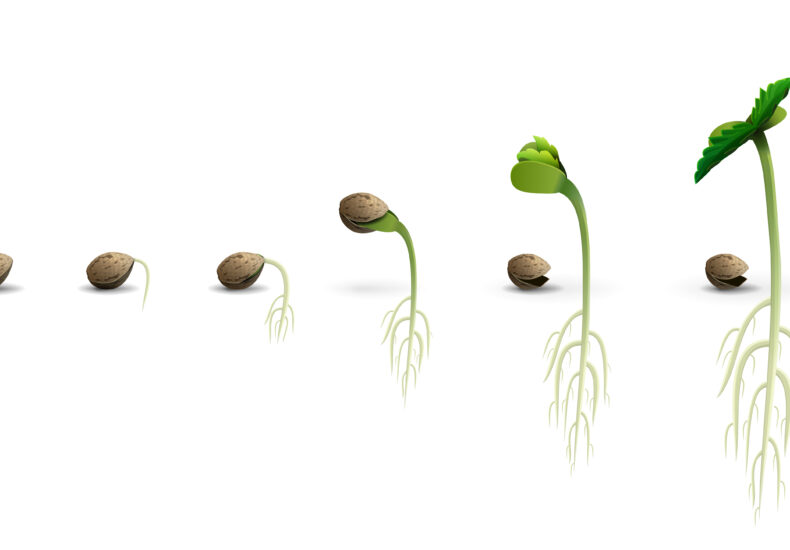 Cannabis
Cannabis Cannabis Life Cycles
- April 4, 2024
- 0 comments
- 405 Views
Craig
Using your bloom a & b plus additives from your range at the recommended rate Only gives a ec reading of 1.4-1.6 . Im used to having a ec reading of 1.8-2.0 for that stage of growth. Any recommendations??
Kevin Castillo
We use 85-95% purity rating for our input ingredients, therefore less EC is needed to get the desired results.
I usually recommend growers stick to the feeding chart unless they know for certain that the strains that they are running like a much higher EC. in that case raise the A&B dosage by 1-2 ml/gal for a few of the middle weeks.
Living Soil
I love this blog, and great that you have shared these a little goes a long way. I enjoy reading this blog; hope to learn more from your blog in the future. Great points!! I love this blog; please keep updated us with such information. You must also check out Thegrobro.co.za it has some great insights too.
حلول تجهيزات الأنابيب uPVC
My brother suggested I might like this website. He was totally right. This post actually made my day. You cann’t imagine just how much time I had spent for this information! Thanks!